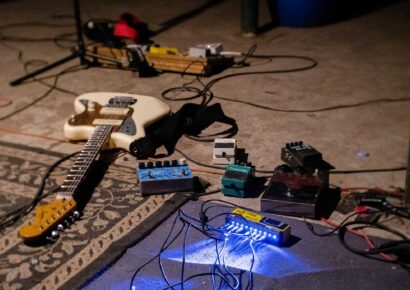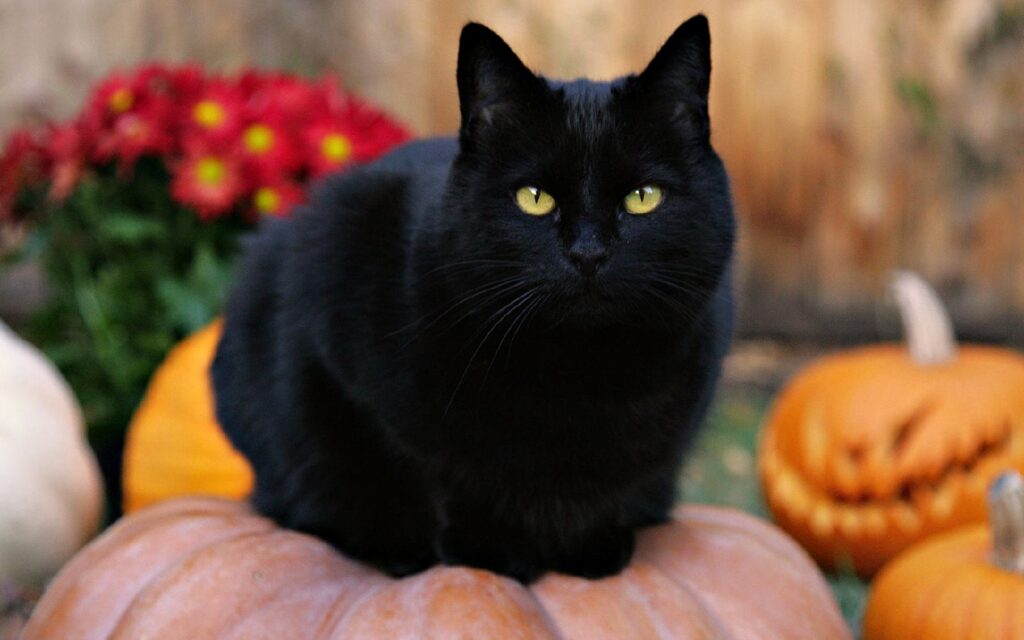To celebrate the legacy of the beloved Beatles drummer, we're taking a look at some of his best moments behind the kit with the Fab Four to get a deeper understanding of his whacky technique, breaking down exactly what makes Ringo Starr such a unique drummer within rock 'n roll history.
While seemingly a simple drummer, Ringo displays plenty of examples in The Beatles’ discography that prove Ringo Starr and his ability to not only hold time, but throw in some pretty expressive fills and unique breaks as well. Starr’s unorthodox approach to drumming might be the butt of many a great joke, but it’s also quite hard to replicate properly, and if anything, it’s a style that can only be pinned down to Ringo.
Read more features, columns and interviews here.
“Rain” – Paperback Writer (1966)
Paul McCartney’s ludicrously good bass tone in this track can’t hurt at all, but make no mistake: ‘Rain’ is by all means a Ringo standout. Released in 1966 as the B-Side to ‘Paperback Writer’ (and supposedly inspired by the tepid drizzle experienced when the band toured Australia in 1964), ‘Rain’ is peppered with insane drum fills from Ringo, who went to down on his Ludwig set to deliver some of the best breaks ever heard on a Beatles song.
Starr’s performance on ‘Rain’ is rated by many critics and Beatles historians as being his best in the band’s discography, with even Ringo himself agreeing that it was his standout moment, telling Rolling Stone in 1984 that “I think it’s the best out of all the records I’ve ever made. ‘Rain’ blows me away … I know me and I know my playing … and then there’s ‘Rain’.
“Come Together” – Abbey Road (1969)
It’s on songs like ‘Come Together’ where the simple genius of Ringo Starr really shines through. The tom-tom introduction ranks right up there with one of the most recognisable drum intros of all time, and even though it’s rudimentary as hell, the subtlety of his playing is something that many an accomplished drummer has striven to achieve on a session since.
Fun fact: if you listen to Ringo’s isolated ‘Come Together’ drum track from the Abbey Road sessions, you can actually hear he plays an ascending tom roll, starting with the floor tom and ending on the rack tom, which makes sense, given he’s a leftie playing a right-handed setup. It’s these kinds of unorthodox touches that really made his style unique, and man does it make for one hell of an intro.
“Tomorrow Never Knows” – Revolver (1966)
‘Tomorrow Never Knows’ isn’t just a track, it’s a psychedelic trip unto itself. The closer to the band’s seminal LP Revolver (and the first track recorded for the album, weirdly enough) saw the Fab Four embark on a radical departure from their typical sound, creating a hypnogogic epic that aimed to replicate the sound of a thousand Tibetan monks chanting from a mountain top.
As most Beatles fans will know, ‘Tomorrow Never Knows’ is a bit of a marvel in the band’s catalogue for a number of reasons. George Martin’s use of tape loops, sampling, Eastern drones, Leslie speaker and multi-tracked vocals proved to be pioneering several times over, but it’s Ringo’s drums that take the cake for this track. Starr’s pounding ostinato and Martin’s clever use of reversed cymbals make this groove one for the ages, and arguably even laid the foundations for the ubiquitous Madchester beats of the ‘80s and ‘90s.
“Ticket To Ride” – Help! (1965)
One of the biggest running jokes among Beatles fans is that Ringo’s drumming is like falling down the stairs: he’s remarkably sloppy, yet somehow never fails to keep time and rarely ever misses a fill. If there’s any track that displays just how great Starr’s sloppiness can be, it’s ‘Ticket To Ride’, where his wildly swung drums help to add yet another hook to what’s already such a melodically potent tune.
Here, Ringo takes a relatively straightforward groove and adds in more swing than Mitchell Starc bowling down the line from the Members End at a Boxing Day test match, making one of the wonkiest grooves the Starr Man ever tracked to tape. Hell, if this beat were programmed into an MPC with a head-snapping kick and snare, it’d even sound like something J Dilla would’ve cooked up. In all seriousness, however, it’s these kinds of wonky beats that helped to establish bit of a cult following for Ringo’s style, and there’s a lot of finesse needed to make sure it works well.
“I Feel Fine” – I Feel Fine (1964)
Let’s not beat around the bush: this drumbeat is a straight rip off of the beat heard on Ray Charles’ ‘What’d I Say?’. Regardless, it holds up as being one of Ringo’s slickest drum performances ever put to tape: the way he approaches the ride cymbal is something every budding jazz drummer should study, and his snare rudiments to accent the beat are simply sublime. It’s an uncharacteristically jazzy and complex beat for a drummer who’s best known for being quite rudimentary, which brings up an interesting point: is it even Ringo?
As the legendary Bernard Purdie once claimed, The Beatles used to employ the use of session drummers to play over Ringo’s sloppy grooves, infamously stating in 2004 that “There are four drummers on the Beatles records. Ringo’s not one of them.” We’re not going to add anything else to this debate, but it’s definitely an interesting conspiracy theory, and we’re certainly not going to say anything to contradict the legend that is Bernard Purdie.
“A Day In The Life” – Sgt. Pepper’s Lonely Hearts Club Band (1967)
When discussing Starr’s drum technique, a lot of musicians pinpoint ‘A Day In The Life’ as being one of the standout moments in The Beatles’ discography, but probably not for the reason you’d think. ‘A Day In The Life’ sees Ringo not only hold down the rhythm, but also add a whole new dynamic by adopting a melodic approach towards his drumming, using his toms to provide counterpoint to McCartney’s descending bassline in a way that’s incredibly difficult for the average drummer to replicate.
Ringo’s drumming on ‘A Day In The Life’ proved to be incredibly influential to a young Phil Collins, who would later discuss Starr’s idiosyncratic approach to the kit in an interview years on. “Ringo is vastly underrated. The drum fills on the song ‘A Day In The Life’ are very complex things. You could take a great drummer today and say, ‘I want it like that.’ He wouldn’t know what to do.”
“She Said She Said” – Revolver (1966)
Yet another premium example of Starr’s sloppy genius, this Revolver album cut sees Starr and McCartney lock in for one of the best grooves on the album. From the head-bopping ghost notes to the snare rolls, ‘She Said She Said’ is a total Ringo Starr tour de force, and to seal the deal, he even flawlessly executes the various time signature changes throughout the tune – it truly is avant garde drumming at its finest.
One notable aspect of this tune is how overzealous the compression on the drums is, courtesy of George Martin and his trusty Fairchild 670 Limiter. If you listen closely, you can hear that Ringo’s kick drum is triggering a heavy dosage of compression on his crash cymbal, creating a whopping, explosive ‘squashing’ sound each time he hits his kick. This approach is considered by many producers and engineers as being one of the earliest instances of side-chaining: a popular ‘pumping’ compression technique favoured by artists like Daft Punk to create their booming drum tracks several decades after.
“Here Comes The Sun” – Abbey Road (1969)
Abbey Road is chock-full of killer Ringo drum moments. Of course, there’s ‘Come Together’ to contend with, but Starr’s playing on ‘The End’ is quite impressive, and the mind-boggling amount of toms on ‘Something’ is something entirely of itself. However, there’s nothing quite like Ringo’s playing on ‘Here Comes The Sun’, which sees the Starr Lord effortlessly flex between 11/8, 4/4, and 7/8 time as if he were some weird mutant drum machine (or, perhaps, Bernard Purdie).
‘Here Comes The Sun’ also boasts one of the best Beatles bridge sections ever, where Ringo absolutely lets loose and delivers some of the most insane fills he ever put to tape with the Fab Four. When asked about his fills on the song by a journalist, Starr reportedly dismissed the notion that he had worked out the meticulous embellishments prior to jumping into the booth, saying “I don’t say, ‘Oh, 16 bars in I’ll do that.’ I have no idea at all what I’m going to do. It just happens.” A similar anecdote could perhaps be applied to Ringo’s entire career, but at the end of the day, isn’t that what makes Ringo the Starr he is?
Keep up with Ringo Starr on socials here.







